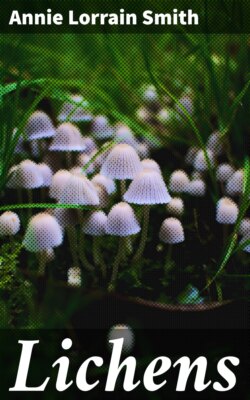Читать книгу Lichens - Annie Lorrain Smith - Страница 16
На сайте Литреса книга снята с продажи.
H. Period VII. 1867 and after
ОглавлениеTable of Contents
Modern lichenology begins with the enunciation of Schwendener’s[146] theory of the composite nature of the lichen plant. The puzzling resemblance of certain forms to algae, of others to fungi, had excited the interest of botanists from a very early date, and the similarity between the green cells in the thallus, and certain lower forms of algae had been again and again pointed out. Increasing observation concerning the life-histories of these algae and of the gonidia had eventually piled up so great a number of proofs of their identity that Schwendener’s announcement must have seemed to many an inevitable conclusion, though no one before had hazarded the astounding statement that two organisms of independent origin were combined in the lichen.
The dual hypothesis, as it was termed, was not however universally accepted. It was indeed bitterly and scornfully rejected by some of the most prominent lichenologists of the time, including Nylander[147], J. Müller and Crombie[148]. Schwendener held that the lichen was a fungus parasitic on an alga, and his opponents judged, indeed quite rightly, that such a view was wholly inadequate to explain the biology of lichens. It was not till a later date that the truer conception of the “consortium” or “symbiosis” was proposed. The researches undertaken to prove or disprove the new theories come under review in Chapter II.
Stahl’s work on the development of the carpogonium in lichens gave a new direction to study, and notable work has been done during the last forty years in that as in other branches of lichenology.
Exploration of old and new fields furnished the lichen-flora of the world with many new plants which have been described by various systematists—by Nylander, Babington, Arnold, Müller, Th. Fries, Stizenberger, Leighton, Crombie and many others, and their contributions are scattered through contemporary scientific journals. The number of recorded species is now somewhere about 40,000, though, in all probability, many of these will be found to be growth forms. Still, at the lowest computation, the number of different species is very large.
Systematic literature has been enriched by a series of important monographs, too numerous to mention here. While treating definite groups, they have helped to elucidate some of the peculiar biological problems of the symbiotic growth.
Morphology, since Schwendener’s time, has been well represented by Zukal, Reinke, Lindau, Fünfstück, Darbishire, Hue, and by an increasing number of modern writers whose work is duly acknowledged under each subject of study. Hesse and Zopf, and more recently Lettau, have been engaged in the examination of those unique products, the lichen acids, while other workers have investigated lichen derivatives such as fats. Ecology of lichens has also been receiving increased attention. Problems of physiology, symbiosis, etc., are not yet considered to be solved and are being attacked from various sides.
British lichenologists since 1867 have been mainly engaged on field work, with the exception of Lauder Lindsay who published after that date a second great paper on the spermogonia of crustaceous lichens. Leighton in his Lichen Flora and Crombie in numerous publications gave the lead in systematic work, and with them were associated a band of indefatigable collectors. Among these may be recalled Alexander Croall (1809-85), a parish schoolmaster in Scotland whose Plants of Braemar include many of the rarer mountain lichens. Henry Buchanan Holl (1820-86), a surgeon in London, collected in the Scottish Highlands as well as in England and Wales. William Joshua (1828-98) worked mostly in the Western counties of Somerset and Gloucestershire. Charles Du Bois Larbalestier, who died in 1911, was a keen observer and collector during many years; he discovered a number of new species in his native Jersey, in Cambridgeshire and also in Connemara; his plants were generally sent to Nylander to be determined and described. He issued two sets of lichens, one of Channel Island plants, the other of more general British distribution, and he had begun the issue of Cambridgeshire lichens. Isaac Carroll (1828-80), an Irish botanist, issued a first fascicle of Lichenes Hibernici containing 40 numbers. More recently Lett[149] has reported 80 species and varieties from the Mourne Mountains in Ireland. Other more extensive sets were issued by Mudd and by Leighton, and later by Crombie and by Johnson. All these have been of great service to the study of lichenology in our country. Other collectors of note are Curnow (Cornwall), Martindale (Westmoreland), and E. M. Holmes whose valuable herbarium has been secured by University College, Nottingham.
The publication of the volume dealing with Lichenes in Engler and Prantl’s Pflanzenfamilien has proved a boon to all who are interested in the study of lichens. Fünfstück[150] prepared the introduction, an admirable presentation of the morphological and physiological aspects of the subject, while Zahlbruckner[151], with equal success, took charge of the section dealing with classification.
